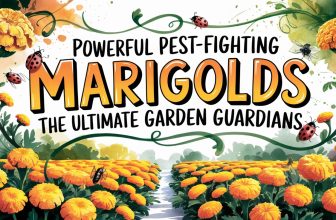Unlock the Secret to Perfectly Potting Your Fiddle Leaf Fig
As fiddle leaf figs continue to grow in popularity, mastering the art of potting these beloved plants is becoming increasingly important for both novice and experienced gardeners. The key to perfectly potting a fiddle leaf fig lies in understanding the intricacies of potting timing, choosing the right pot size, and utilizing the appropriate potting technique.
However, there's more to it than meets the eye. Unlocking the secret to perfectly potting your fiddle leaf fig involves a careful balance of factors that contribute to the health and growth of these stunning plants.
In the following discussion, we will explore the essential considerations and expert insights that can elevate your potting skills to ensure the optimal well-being of your fiddle leaf fig.
Choosing the Right Pot Size
When repotting a fiddle leaf fig, it is essential to choose a pot size that allows for proper root development and growth. The potting depth should be sufficient to accommodate the existing root system and allow for future growth.
It is recommended to use a potting material that provides good drainage, such as a well-draining potting mix that consists of peat, pine bark, and perlite.
Additionally, the type of pot chosen can impact the plant's well-being. Terra cotta pots, known for their porous nature, promote quick drying and minimize the risk of root rot. On the other hand, ceramic pots offer stability, making them suitable for larger fiddle leaf fig trees.
When transitioning to a larger pot size, it's crucial to select a pot only slightly larger in diameter to prevent excess soil, which can lead to root rot, particularly in low light conditions.
Potting Timing and Considerations
Potting your fiddle leaf fig at the appropriate time is crucial for its successful acclimation to a new environment and sustained growth. The frequency of repotting should be determined by the plant's root-bound status and visible roots in the drainage holes.
It is important to use the right potting tools, such as a 4-inch diameter plastic nursery pot for rooted cuttings and newly acquired fiddle leaf figs. When transitioning to a larger pot size, choose a pot only 2 inches larger in diameter than the current pot to avoid excess soil, which can lead to root rot, especially in low light conditions.
Additionally, consider the type of pot to use, taking into account personal preference and the plant's needs, while avoiding repotting in winter when plants are not actively growing.
Root Bound Signs and Solutions
The presence of roots emerging from the drainage holes and encircling the root ball is a clear indication that a fiddle leaf fig is becoming root bound and requires attention. Signs of a root-bound plant include slow growth, yellowing leaves, and the need for more frequent watering.
To address this issue effectively, consider the following:
- Root Bound Prevention: Regularly check the root system and repot as needed to prevent the plant from becoming root bound.
- Potting Up Techniques: When repotting, choose a pot that is only slightly larger than the current one to avoid excessive soil which can lead to root rot. Use pots with drainage holes for proper drainage.
Importance of Drainage Holes
Proper drainage is essential for the health and vitality of a fiddle leaf fig plant. It helps prevent waterlogged soil and potential root rot. When the soil does not drain properly, excess water accumulates around the roots. This leads to oxygen deprivation and creates an environment conducive to root rot.
The importance of proper drainage cannot be overstated, especially for fiddle leaf figs. They are susceptible to root rot if their soil remains too wet. By ensuring that the potting mix has adequate drainage and using pots with drainage holes, the risk of water accumulation is minimized. This promotes optimal root health.
This attention to drainage is crucial for preventing root rot, maintaining healthy roots, and ultimately supporting the overall well-being of the fiddle leaf fig plant.
Optimal Pot Types for Fiddle Leaf Figs
When considering the optimal pot types for fiddle leaf figs, it is imperative to prioritize proper drainage to mitigate the risk of root rot, ensuring the health and vigor of the plant. When selecting a pot for your fiddle leaf fig, consider the following:
- Best Pot Materials
- Terra cotta pots are porous and dry out quickly, minimizing the risk of root rot.
- Plastic pots are lightweight and make it easy to remove the plant for repotting.
- Ceramic pots provide stability for large fiddle leaf fig trees.
When potting your fiddle leaf fig, keep in mind these potting tips and tricks:
- Choose a pot that is only 2 inches larger in diameter than the current pot to avoid excess soil.
- Always use pots with drainage holes for optimal drainage and root health.
Repotting Dos and Don'ts
To ensure successful repotting of your fiddle leaf fig, it is essential to carefully assess the plant's root-bound status and choose an appropriately sized pot with adequate drainage. Repotting frequency should be determined by the plant's root-bound status, rather than a set schedule.
Common mistakes include repotting too soon, which can stress the plant, and using a pot that is too large, leading to excess soil and potential root rot, especially in low light conditions. It's crucial to avoid these errors and only repot when the plant is genuinely root-bound.
Additionally, always use pots with drainage holes to ensure proper drainage and choose a pot only slightly larger in diameter than the current one to avoid overwhelming the plant with excess soil.
Ideal Potting Soil Mix
An effective potting soil mix for fiddle leaf figs should provide a well-draining, nutrient-rich environment to support healthy root development and overall plant growth. When creating the ideal soil composition for your fiddle leaf fig, consider the following potting mix ingredients:
- Peat moss: Retains moisture while providing aeration for the roots.
- Perlite: Improves drainage and prevents soil compaction.
- Pine bark: Adds structure to the soil mix and aids in aeration.
These ingredients combined in the right proportions create a well-balanced potting soil mix that promotes optimal growth for your fiddle leaf fig.
Potting Technique for Fiddle Leaf Figs
In ensuring the proper potting technique for fiddle leaf figs, a well-draining, nutrient-rich potting soil mix, as previously discussed, lays the foundation for healthy root development and overall plant growth. When repotting, it's important to follow a few key steps to ensure the best outcome for your fiddle leaf fig. Here's a table summarizing the potting technique for fiddle leaf figs:
| Potting Technique for Fiddle Leaf Figs |
|---|
| Wait until roots are about an inch long before potting up |
| Start with a 4-inch diameter plastic nursery pot |
| Choose a pot one size larger when root-bound |
Additionally, maintaining a regular fertilizing routine and employing proper pruning techniques are essential for the continued health and vitality of your fiddle leaf fig.
Acclimating Newly Acquired Fiddle Leaf Figs
Acclimating newly acquired fiddle leaf figs requires a gradual transition to their new environment to minimize stress and encourage healthy growth. When caring for newly acquired fiddle leaf figs during acclimation, consider the following tips for successful potting up of fiddle leaf fig cuttings:
- Allow the plant to adjust: Keep the newly acquired fiddle leaf fig in the same pot initially, letting it acclimate to the new environment for at least a month.
- Opt for gradual repotting: Avoid repotting too soon, as it can stress the plant. Wait until the plant is root-bound before moving it to a larger pot.
- Choose the right timing: Repot in late winter to early spring or during summer for acclimation, and avoid repotting in winter when plants are not actively growing.
Troubleshooting Potting Issues
Troubleshooting potting issues can be essential for maintaining the health and vitality of fiddle leaf figs. This requires a keen understanding of potential challenges and effective solutions.
When repotting, it's crucial to watch for signs of root rot. These signs include excessive soil moisture and browning or mushy roots. To prevent root rot, always use pots with drainage holes and well-draining soil. Avoid compacted or waterlogged conditions.
Repotting troubleshooting also involves knowing when to transition to a larger pot size. This is indicated by visible roots in the drainage holes or when the plant becomes root-bound. Choosing a pot only slightly larger in diameter than the current one can prevent excess soil, which can contribute to root rot. This is especially important in low light conditions.
Frequently Asked Questions
Can I Use a Decorative Pot Without Drainage Holes for My Fiddle Leaf Fig?
Using a decorative pot without drainage holes for your fiddle leaf fig may lead to overwatering and root rot. Without proper drainage, water can accumulate at the bottom of the pot, suffocating the roots. This can compromise the plant's health and vigor.
To maintain optimal root health and watering frequency, it is recommended to use pots with drainage holes. This allows excess water to escape, preventing waterlogged soil and promoting a healthy root system.
How Often Should I Repot My Fiddle Leaf Fig?
Repotting your fiddle leaf fig should be done when it becomes root-bound, typically every 1-2 years. Signs of a root-bound plant include roots emerging from drainage holes.
Use a well-draining potting mix and increase pot size by 2 inches in diameter. During repotting, gently prune the roots to encourage healthy growth.
Avoid repotting in winter and instead opt for late winter to early spring or summer.
Can I Use a Self-Watering Pot for My Fiddle Leaf Fig?
Yes, you can use a self-watering pot for your fiddle leaf fig. It can help maintain a consistent watering schedule and prevent overwatering, a common issue with this plant.
When selecting a pot, consider the plant's size and root-bound status. A self-watering pot can be beneficial as it provides a reservoir for water, ensuring the plant's moisture needs are met without the risk of overwatering.
Is It Okay to Use a Pot With a Saucer for My Fiddle Leaf Fig?
Using a pot with a saucer for your fiddle leaf fig is acceptable, but it's crucial to consider the watering schedule and drainage. Ensure the pot has adequate drainage holes to prevent waterlogging and root rot. The saucer can help collect excess water, but it's essential to empty it regularly to avoid creating a waterlogged environment.
Additionally, choose a pot size that accommodates root growth while allowing for proper watering and drainage.
Can I Repot My Fiddle Leaf Fig Into a Smaller Pot if It's Not Growing Much?
Repotting a fiddle leaf fig into a smaller pot if it's not growing much can stress the plant and compromise its health. It's essential to adhere to proper repotting techniques and consider the plant's growth conditions.
Choosing the right potting size is crucial for fiddle leaf fig care. Miniature potting may inhibit root development, affecting the plant's health. It's advisable to prioritize plant health over aesthetics and opt for a pot that promotes healthy growth.
Conclusion
In conclusion, mastering the art of potting fiddle leaf figs is essential for their optimal growth and health. By choosing the right pot size, timing the potting process appropriately, and using the ideal potting soil mix and technique, gardeners can ensure the well-being of their fiddle leaf fig plants.
Additionally, paying attention to root bound signs, drainage holes, and acclimating newly acquired plants will contribute to successful potting and thriving fiddle leaf figs.
Disclaimer: GardeningNorm is a participant in the Amazon Services LLC Associates Program and may receive a commission if you purchase a product via a link on this page.. However, this does not impact our reviews.Read the full disclosure here.



